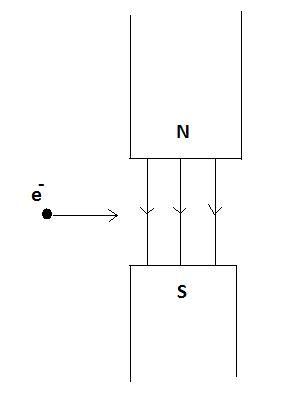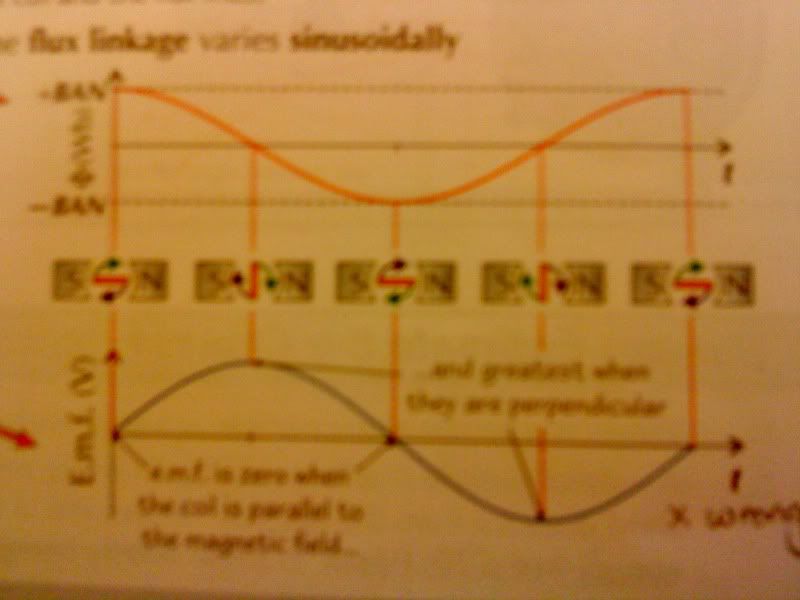This discussion is now closed.
Check out other Related discussions
- GCSE Exam Discussions 2024
- Go from a C to a B in National 5 Physics
- how to improve in maths a level?
- revising for biology the night before year 10 unit 1
- C to A in maths in three months?
- Vibrations study help please
- How should i be revising for maths?
- Edexcel HISTORY Cold war AND ENGLISH LANGUAGE P1 Year 10
- how to revise ?
- A level biology, help
- fluctuating thoughts
- maths
- how to go from a grade5/6 in maths to a grade 7 in a month for gcses. please help
- Knowledge in The Handmaids Tale and Frankenstein
- A-level Bio study help
- Circles- maths
- afraid of past papers [seriously]
- what r ur honest gcse opinions :)
- A level Biology percentage error and standard deviation
- Maths at Level 2
Question I dont understand...
Scroll to see replies
2710
I am not moving the wire. I am trying to find the force on the wire. Your posts are very confusing. I am not using the Dynamo rule, but the Motor Rule. I do not know why you are using your right hand, unless you was taught a different way.
And then with your next posts, you say that it is pointing right...so, meh, it doesn't matter anymore. I got it.
EDIT:
StoneBridge, can I just ask:

Is the same as this:

Right? (when talking about the force)
Ie: Both move out of the page towards you?
And then with your next posts, you say that it is pointing right...so, meh, it doesn't matter anymore. I got it.
EDIT:
StoneBridge, can I just ask:

Is the same as this:

Right? (when talking about the force)
Ie: Both move out of the page towards you?
Yes if the 1st one is a wire carrying a conventional current to the left.
The wire will experience a force out of the page.
Both are LHR to find the force on a current in a field. One current conventional (+) the other negative.
Stonebridge
Yes, and the wire is stationary, but the charged particle is moving.
The LHR is used for a stationary wire carrying current. The wire experiences a force.
If the wire is moving you use the RHR to find the induced emf/current direction.
With the LHR the current is already flowing and the rule finds the force direction.
The LHR is used for a stationary wire carrying current. The wire experiences a force.
If the wire is moving you use the RHR to find the induced emf/current direction.
With the LHR the current is already flowing and the rule finds the force direction.
Yes , that is what Iam saying as well ..In post 29 when I said the former(motion of the wire) uses RHR..
I found another error in this revision guide I think. It's attached.

Sorry its not very clear, but it says:
'emf is zero when the coil is parallel to the magnetic field...
...and greatest when they are perpendicular'
This is wrong right (the bottom graph)
What about the top graph. Its a graph of BAN, ie Flux linkage. I hope you can see the coil
Thanks

Sorry its not very clear, but it says:
'emf is zero when the coil is parallel to the magnetic field...
...and greatest when they are perpendicular'
This is wrong right (the bottom graph)
What about the top graph. Its a graph of BAN, ie Flux linkage. I hope you can see the coil
Thanks
Yes it's wrong. Mind you I have now got crossed eyes from trying to see that diagram. 
Max emf when coil is parallel to field. Thats when its sides are cutting flux most quickly.
Min emf when the coil is perpendicular to the field.
The little magnet and coil diagrams are wrong.

Max emf when coil is parallel to field. Thats when its sides are cutting flux most quickly.
Min emf when the coil is perpendicular to the field.
The little magnet and coil diagrams are wrong.
2710
OK thanks.
I have are system oscillating at 1.5Hz, and I have forced vibrations of 10Hz. How do I find the phase difference? Is there a simple method?
Apparently the answer is out of phase by pi.
Thanks
I have are system oscillating at 1.5Hz, and I have forced vibrations of 10Hz. How do I find the phase difference? Is there a simple method?
Apparently the answer is out of phase by pi.
Thanks
draw a sketch ..
for 1.5hz, there 1.5 (1+0.5)oscillations per second..
10 there are 10 osicallitions per sec..
then 10 Hz will be always pi out of phase (1.5=1+0.5, 0.5 oscillation is half a wavelength)
2710
OK thanks.
I have are system oscillating at 1.5Hz, and I have forced vibrations of 10Hz. How do I find the phase difference? Is there a simple method?
Apparently the answer is out of phase by pi.
Thanks
I have are system oscillating at 1.5Hz, and I have forced vibrations of 10Hz. How do I find the phase difference? Is there a simple method?
Apparently the answer is out of phase by pi.
Thanks
When they said "find", did they mean calculate? What are you given in the question?
At A Level generally, you would be expected to know that the following is the general way such a system behaves:
•
When the driving force is at a higher frequency than the oscillating system, the sytem is about half a wavelength (pi) behind.
•
When the driving force is at the same frequency as the oscillating system (resonance), the sytem is a quarter of a wavelength behind.
•
When the driving force is at a lower frequency than the oscillating system, the sytem is almost in phase.
It is beyond A Level to prove this.
An example of this is seen in the experiment called "Barton's Pendulums."
A search on YouTube will find loads of vids of this.
Original post by Stonebridge
Between the parallel plates there is a uniform electric field. That means the value of E (and therefore F on any charge) is the same everywhere. (Don't get confused with the potential at different points between the plates).
For a parallel plate system the field is simply E=V/d (Often called a uniform potential gradient) and is the same everywhere. So F=Eq and E=V/d
It would be the same at the other two points.
For a parallel plate system the field is simply E=V/d (Often called a uniform potential gradient) and is the same everywhere. So F=Eq and E=V/d
It would be the same at the other two points.
Hi, I know you posted this ages ago but does this mean that force is the same at every point in a uniform electric field?
Original post by sykik
Hi, I know you posted this ages ago but does this mean that force is the same at every point in a uniform electric field?
Yes. If the field is uniform, the force on a charge is the same everywhere. That is the definition of what a uniform field is.
This is an old thread and is now closed.
Related discussions
- GCSE Exam Discussions 2024
- Go from a C to a B in National 5 Physics
- how to improve in maths a level?
- revising for biology the night before year 10 unit 1
- C to A in maths in three months?
- Vibrations study help please
- How should i be revising for maths?
- Edexcel HISTORY Cold war AND ENGLISH LANGUAGE P1 Year 10
- how to revise ?
- A level biology, help
- fluctuating thoughts
- maths
- how to go from a grade5/6 in maths to a grade 7 in a month for gcses. please help
- Knowledge in The Handmaids Tale and Frankenstein
- A-level Bio study help
- Circles- maths
- afraid of past papers [seriously]
- what r ur honest gcse opinions :)
- A level Biology percentage error and standard deviation
- Maths at Level 2
Latest
Last reply 1 minute ago
Ordinarily Resident - living abroad for last 2 yearsLast reply 2 minutes ago
Inlaks, Commonwealth, and Other Scholarships for Indian Students 2024: ThreadLast reply 2 minutes ago
PA Consulting Degree Apprenticeships 2024Last reply 4 minutes ago
What do I need - I've a UK passport but live in EULast reply 6 minutes ago
Official UCL Offer Holders Thread for 2024 entryLast reply 8 minutes ago
Official London School of Economics and Political Science 2024 Applicant ThreadLast reply 8 minutes ago
Why is the political left now censorious and authoritarian??Last reply 10 minutes ago
JK Rowling in ‘arrest me’ challenge over hate crime lawLast reply 11 minutes ago
student finance - mothers boyfriend taken into accountLast reply 14 minutes ago
MPhil Advanced Computer Science Cambridge - 2024 Entry


